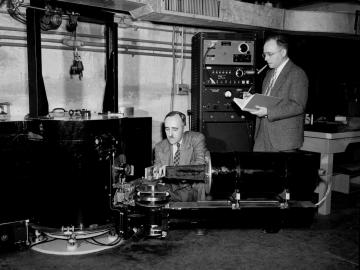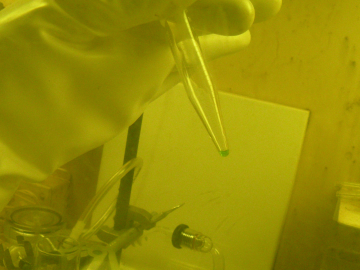Filter News
Area of Research
- (-) Fossil Energy (1)
- (-) Materials for Computing (3)
- (-) Neutron Science (19)
- Advanced Manufacturing (4)
- Biological Systems (1)
- Biology and Environment (7)
- Clean Energy (42)
- Computer Science (1)
- Fusion and Fission (1)
- Isotopes (1)
- Materials (40)
- National Security (3)
- Nuclear Science and Technology (8)
- Supercomputing (19)
- Transportation Systems (1)
News Type
News Topics
- 3-D Printing/Advanced Manufacturing (2)
- Bioenergy (2)
- Biomedical (3)
- Climate Change (1)
- Computer Science (5)
- Coronavirus (3)
- Energy Storage (2)
- Environment (2)
- Materials Science (7)
- Microscopy (1)
- Nanotechnology (4)
- National Security (1)
- Neutron Science (13)
- Physics (2)
- Polymers (1)
- Quantum Science (2)
- Summit (4)
- Sustainable Energy (3)
- Transportation (2)
Media Contacts

Five researchers at the Department of Energy’s Oak Ridge National Laboratory have been named ORNL Corporate Fellows in recognition of significant career accomplishments and continued leadership in their scientific fields.

Scientists at ORNL used neutron scattering and supercomputing to better understand how an organic solvent and water work together to break down plant biomass, creating a pathway to significantly improve the production of renewable

A team of researchers has performed the first room-temperature X-ray measurements on the SARS-CoV-2 main protease — the enzyme that enables the virus to reproduce.

Oak Ridge National Laboratory has licensed a novel method to 3D print components used in neutron instruments for scientific research to the ExOne Company, a leading maker of binder jet 3D printing technology.

A team led by the Department of Energy’s Oak Ridge National Laboratory synthesized a tiny structure with high surface area and discovered how its unique architecture drives ions across interfaces to transport energy or information.

An international team of researchers has discovered the hydrogen atoms in a metal hydride material are much more tightly spaced than had been predicted for decades — a feature that could possibly facilitate superconductivity at or near room temperature and pressure.




The International Union of Pure and Applied Chemistry (IUPAC) Inorganic Chemistry Division has published a Provisional Recommendation for the names and symbols of the recently discovered superheavy elements 113, 115, 117, and 118.




